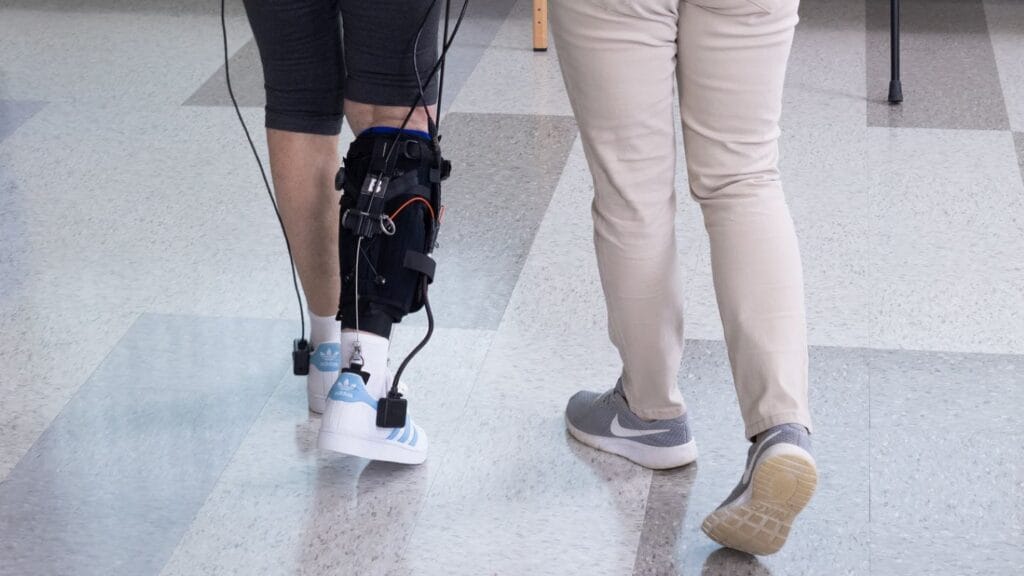

Exoskeleton technology — machines or devices that are worn on the outside of one’s body — has emerged as a promising method to help older adults rehab from neurologic conditions, such as stroke or Parkinson’s, that have hampered mobility.
Such tools also may be beneficial for nurses and caregivers, a new report suggests.
Although the term “exoskeleton” evokes sci-fi imagery such as the mech-warrior suits in “The Matrix” or “Avatar,” existing technology often consists of smaller, more practical devices worn like bands or a girdle around the waist or legs, designed to assist with posture or physical fatigue.
Tasks like lifting residents in and out of bed, or helping them up after a fall, often can put caregivers themselves at risk for injury, especially if they are working long hours. Senior living and care staff members are eight times more likely to suffer a workplace injury than the average US laborer, one recent report found.
At present, some long-term care facilities have looked into incorporating robotic tech or machinery to aid with difficult tasks such as lifting residents or objects such as packages.
“The implementation of exoskeletons has the potential to positively impact nurses’ work life by reducing work-related injuries, improving physical well-being, enhancing job satisfaction, and promoting psychological and psychosocial benefits,” the study authors wrote.
Investigators looked at the existing research that had been done with exoskeletons for nurses and found the results “promising,” if limited, to date.
The majority of studies post-pandemic reviewed the possibility of tech meant to assist with nurses’ lower back regions, the report said, indicating that there was reasonable evidence that it helped workload; one quantitative study found it reduced nurses’ back muscle strain by 10% compared with with no mechanical aid.
One issue the report raised is the prospect of overreliance on exoskeleton technology. Nurses would still have to work on maintaining strength and conditioning so as to not increase their risk of injury when the device is unavailable, the researchers explained.
The report also speculated that the cost of exoskeletons for a workforce could be a major practical limitation on adopting the technology, as well as the need to maintain or repair such devices. As technology becomes more developed, developers and healthcare providers should seek out potential partnerships, the study authors suggested.


